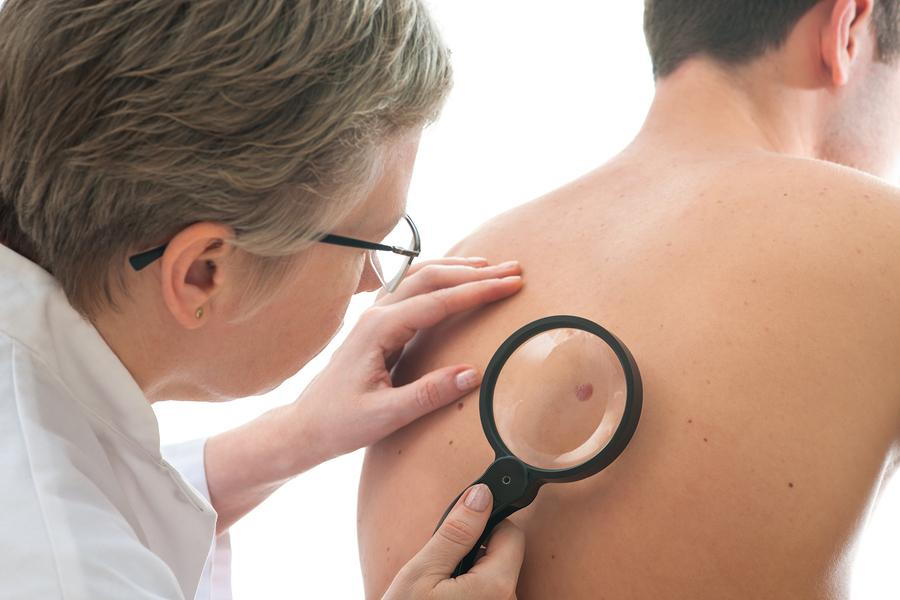Is the sun your friend, or not? Is time your friend, or not? The answers to these questions may go either way when we talk about skin cancer. Cancer Research UK says that too much sun damages the DNA in your skin, giving a clear path for cancer to grow, particularly deadly melanoma. Age increases your risk, too. That's why the Skin Cancer Foundation recommends monthly self-exams and yearly evaluations by a board-certified skin doctor. Dr. Robert Dyer and Dr. Vincent Criscione of South County Dermatology in East Greenwich, RI agree that routine skin cancer screenings are very important.
cancer. Cancer Research UK says that too much sun damages the DNA in your skin, giving a clear path for cancer to grow, particularly deadly melanoma. Age increases your risk, too. That's why the Skin Cancer Foundation recommends monthly self-exams and yearly evaluations by a board-certified skin doctor. Dr. Robert Dyer and Dr. Vincent Criscione of South County Dermatology in East Greenwich, RI agree that routine skin cancer screenings are very important.
Is skin cancer really deadly?
Yes, it can be if not caught and cured in its earliest stages. In fact, the American Cancer Society says that about 68,000 new cases of malignant melanoma, which goes deep into the skin and travels to the lymph nodes and other body organs, are diagnosed annually in the United States. Of these occurrences, about 12 percent will prove fatal. Unfortunately, melanoma is the number one cancer among young adults ages 25 to 29.
Kinds of skin cancer
Besides malignant melanoma, there is:
- Basal cell carcinoma, easily cured when detected early. It affects the deeper parts of the epidermis, the topmost layer of the skin.
- Squamous cell carcinoma, which grows in the topmost part of the epidermis.
What can you do?
Know your risk. If you are over 50, your chances of getting skin cancer increase simply because of the aging process. Also, if you are out in the sun a lot, do what you can to cover up (long-sleeves and pants, sunglasses and a hat) if you are working outside. Use sun screen (SPF 30 or higher, and reapply it if swimming or sweating). Stay indoors or in the shade out of the summer sun between 10 am and 2 pm.
Additionally, be aware of what your skin is doing. Watch for pink or red scales, changes in long-standing moles, and large brown spots that appear anywhere on your body, including under your nails. The American Academy of Dermatology asks you to think about these worrisome characteristics of skin lesions that may be cancerous:
Asymmetry - One side of the spot is shaped or colored differently than the other.
Border - The edges of a mole used to be smooth but now are notched or scalloped.
Color - It is uneven through out the spot.
Diameter - The spot grows to 6 mm or larger.
Evolving - The lesion changes in color, size or configuration or has become distinctly different from others you have.
Finally, get a routine skin check at South County Dermatology annually beginning at age 40. It's a simple way to be assured that the largest organ of your body--your skin--is cancer-free and healthy.
Come to South County Dermatology in East Greenwich
Contact the office today for an appointment with Dr. Dyer or Dr. Criscione. We have 4 offices (Narragansett, East Greenwich, Westerly and Barrington) to serve you. Call (401) 471-3376.
